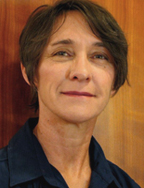The Future of Desalination in Arizona

Sarah Porter
March 16, 2017
Is desalination the answer to Arizona’s future water supply challenges?
According to the expert panelists at last week’s Kyl Center for Water Policy Leaders Roundtable, desalinated water is not likely to become Arizona’s next major water supply, but it may become a bigger part of some Arizona communities’ water portfolios.
The Kyl Center’s Leaders Roundtable brings together elected officials and policy makers from across the state for a discussion of Arizona’s water challenges and their solutions. Moderated by ASU law professor and Kyl Center Senior Research Fellow Rhett Larson, The Future of Desalination Roundtable featured four expert panelists representing private industry, academia and a public agency.
While high profile ocean desalination plants in the Middle East, Carlsbad and elsewhere have captured public imagination, the Roundtable panelists explained that desalinating groundwater may provide more immediate opportunities for Arizona. The state’s aquifers contain significant quantities of brackish (or high saline) water. Indeed one study concluded that the state’s aquifers hold 600 million acre-feet of recoverable brackish groundwater – that amounts to over eighty times the state’s total current annual demand.
With advances in reverse osmosis (RO) technology, construction of brackish desalination plants has surged in the United States over the last twenty-five years. Today, there are over 300 inland brackish desalination plants providing water to US municipalities, with two-thirds of those plants located in three states: Florida, California and Texas. In contrast, there are only about twelve seawater desalination plants in the US. As of 2010, Arizona had fewer than a dozen municipal desalination plants, the largest operated by the City of Goodyear. (The very first municipal desalination plant in the United States was operated by the Town of Buckeye from 1962 to 1988.)
But, as the panelists emphasized, desalination involves challenges.
One of the biggest is brine, the wastewater byproduct of desalination, which is typically heavy in salts, metals and other constituents. Seawater desalination plants can discharge this byproduct back into the ocean. Disposing of brine from an inland plant is more challenging. The two most common disposal methods, evaporation ponds and deep well injection, are costly and disposal sites are limited. Goodyear has been experimenting with using constructed wetlands to filter brine, a potentially economical and environmentally friendlier solution.
Another challenge of desalination is cost. In comparison with other water sources, desalination tends to be expensive: Plants require a large capital investment; the RO process is energy intensive; brine disposal adds cost.
Panelist Shawn Bradford, EPCOR Water USA Vice President, pointed out that public-private partnerships can be structured to potentially spare municipalities some of these costs and transfer some of the risks from the public to the private partner.
Co-panelist, Sharon B. Megdal, PhD, Director of University of Arizona’s Water Resources Research Center, highlighted Israeli desalination projects, which now provide over forty percent of the country’s water supply. Israel’s newest RO plants are producing larger quantities of desalinated water and more efficiently than ever.
The panelists addressed possibilities for Arizona to benefit from a seawater desalination plant, most likely through an agreement with Mexico or California in which Arizona would take a larger share of Colorado River water in exchange for helping to finance a plant. Panelist Chuck Cullom, Colorado River Programs Manager for Central Arizona Water Conservation District, noted that there is potential for the planned Rosarito seawater desalination plant near Tijuana, Mexico, to serve Otay, California through a binational exchange. As an additional example of international cooperation, Megdal cited the Red Sea-Dead Sea Project in Israel, a multi-part desalination and water exchange project which will result in new water supplies for Israel, Jordan and the Palestinian Authority.
Panelist Robert Lotts, Water Resources Manager for Arizona Public Service Co. and Chair of the Desalination Subcommittee of Governor Ducey’s Water Augmentation Committee, observed that “the drought starts the day after it rains.” Given the likely ten to fifteen year timeline from concept to completion of a desalination plant, Lotts said it is not too soon for Arizona communities to seriously consider whether desalination should be part of a future water portfolio.